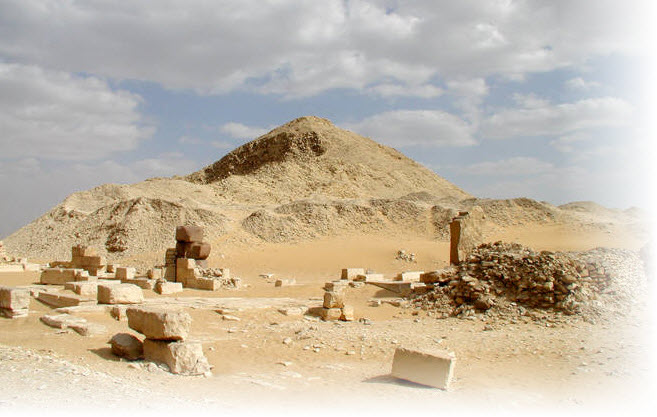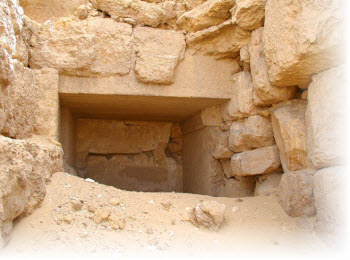Saqqara
Sakkara (or Saqqara or Sakkara) is a vast necropolis in Memphis area of Egypt. It was used continuously throughout the history of ancient Egypt.

From the earliest dynasties, the kings built their mastabas there and that is also here the first pyramid was built by Imhotep, the architect of Djoser (Third Dynasty) to-2600. It is generally accepted that this was the first stone building erected in Egypt.
A royal necropolis during the Old Kingdom, the site was developed around the royal pyramids of the fifth and sixth dynasties. The many mastaba from this era contain many perfectly preserved reliefs describing the daily life of ancient Egypt.
In the Middle Kingdom, with the removal of Pharaoh and his court, first to Thebes and later in the Fayum, the necropolis was somewhat neglected.
Under the New Empire, with the revival of the city of Memphis during the eighteenth and nineteenth Egyptian dynasties, the nobles and courtiers were once again buried at Saqqara in tombs topped temples and funeral chapels.

Statue of the god Apis from the Ptolemaic period |
One of the most famous is the tomb that Horemheb had built before he was crowned pharaoh. The reliefs of the chapel depict him with the Royal symbols, in anticipation of his later status.
The tombs of the sacred Apis bulls, whose cult was centered in Memphis are also found at Saqqara. Inaugurated at the eighteenth dynasty, the Serapeum developed mainly during the Ramses dynasty. The son of Ramses II, Khaemwaset, High Priest of Ptah, caused inscriptions and steles to be made describing himself as a great magician and also describing the restoration of the tombs of Apis and the inauguration of the great catacomb which thereafter continued to grow to accommodate the mummified remains of sacred bulls. Khaemwaset died before his father and was buried in the Serapeum.
Then in the Late Period a sanctuary was built at Saqqara which became the most important center of pilgrimage and retained its importance to the end of Egyptian history, even under the Ptolemies and the Roman emperors. An avenue of sphinxes leading to the temple dedicated to Apis (since disappeared) which was reached by crossing a dromos house built in the Hellenistic style containing statues of the major philosophers and thinkers of antiquity.
Other shrines dedicated to Anubis and Bastet were built next to the catacombs at galleries enclosing endless amounts of animal mummies, witnesses of the popular enthusiasm for the worship of sacred animals.
Europeans and Egyptians who continue to search the ground of Saqqara discovered many previously unknown tombs. A fresco representing the rendering of an ox was found in the tomb of a nobleman of the Old Empire. At the time of the pharaohs, the Egyptians wanted to believe in the immortality of the human person. To walk in the afterlife, it would find the images of daily life, including representations of food.
The number of monuments, temples and tombs within this complex is truly astounding.

Entry to a Mastaba |
Saqqara North
* Mastaba of the First Dynasty, Second Dynasty of which:Saqqara Center
* Third Dynasty:Saqqara South
* Fourth Dynasty:Main mastaba tombs
* Mastaba of the First Dynasty, Second Dynasty and Third dynasty Saqqara North including:pyramids Egypt Mummies Search Engines Link Report
Egyptian Cities | Egyptian Education | Ancient Egypt | egyptian clothing | Egyptian Houses | The Egyptians | Egyptian Family Life | Egypt and its Neighbours | Government in Ancient Egypt | Egyptian History | Military | Organization of Ancient Egypt | Recreation | Egyptian Religion | Pyramids | About | Privacy Policy | Site News | Site Map
EgyptPast.com - Facts and Information About the History of Ancient Egypt
-